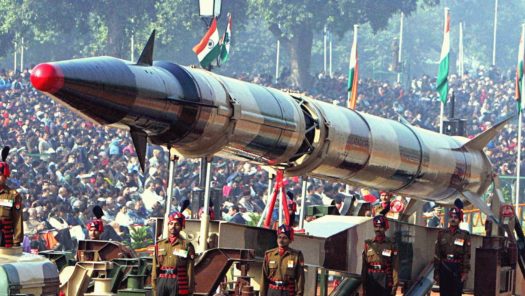Cold Start Doctrine
Return to article
Strategic Stability & Restraint in South Asia
The interplay of global power competition and nuclear weapon states sharing disputed borders continue to make South Asia one of the most volatile regions in the world today. February 2021 marked two years since the 2019 India-Pakistan Pulwama-Balakot crisis, as…

Does Eschewing Tactical Nuclear Weapons Continue to Make Strategic Sense for India?
In 2000, Brigadier Gurmeet Kanwal (retired) wrote engaging piece on the question of whether India needed tactical nuclear weapons (TNWs). The erudite soldier-scholar presented valid arguments for both sides of the argument, and in his characteristically nuanced style, made a convincing…

Upping the Ante in Conventional Deterrence: An Overview of India’s Tejas Fighter Jet
Two months ago the Indian Air Force (IAF) operationalized its second squadron of the Tejas Light Combat Aircraft (LCA), an indigenous fighter jet that initially sought to replace the Mig-21. The Tejas comes as a cost effective option for the…

Enhancing Deterrence Stability on the Subcontinent: the Case for Conventional Deterrence
I. Introduction South Asia’s security landscape is intricate and dangerous. Two nuclear weapon states, India and Pakistan, stand locked and loaded on a long and volatile border. The nuclear dyad has experienced previous close calls with escalatory potential, from the…

بالاکوٹ سے لئے گئے اسباق: پاکستان کی نگاہ سے ایک جائزہ
۱۹۹۸ میں جوہری طاقت ہونے کے اعلان کے بعد سے تاحال، پاکستان اور بھارت کے مابین ہونے والے سنگین ترین اور تازہ ترین بحران کو ایک برس ہوچکا ہے۔ تاہم تناؤ میں کمی کا کوئی امکان دکھائی نہیں دیتا۔ گزشتہ…

Lessons Learnt from the Balakot Strikes: The View from Islamabad
It has been a year since Pakistan and India’s most recent and most serious crisis after their overt nuclearization in 1998. However, tensions have far from subsided. In the past year, there have been increasing ceasefire violations on the Line…